Changes in folk culture
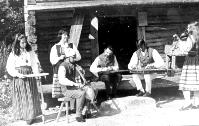 |
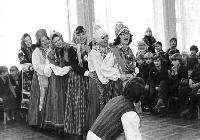 |
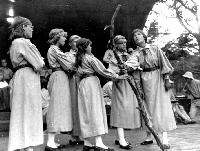 |
| Photo 1. |
Photo 2. |
Photo 3. |
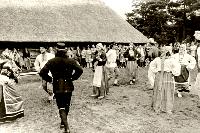 |
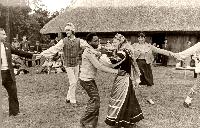 |
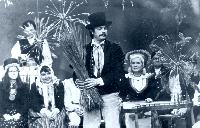 |
| Photo 4. |
Photo 5. |
Photo 6. |
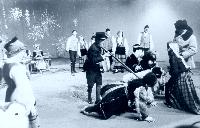 |
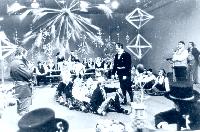 |
|
| Photo 7. |
Photo 8. |
|
-
Photos:
Photo 1. An ideal performance setting for a folklore ensemble
- idyllic out-door scenery at the Open-Air Museum.
Leegajus in mid-seventies.
Photo 2. A folklore ensemble introduces the past peasant recreations to
modern schoolchildren. The Eagle Game is played at the folklore day
in Märjamaa Secondary School in 1979.
Photo 3. A folklore ensemble tries to get into the spirit of the
performed working song by imitating the original working process.
Piibar performing Hand Mill Song in 1983.
Photo 4-5. A folklore ensemble serves one of its modern purposes
while entertaining an audience at the Open-Air
Museum which inevitably includes dancing with foreigners.
Photo 6-8. One important function of folklore ensembles has been
the promoting of traditional peasant calendar rites and holidays which became
particularly popular in the eighties. On the photos folklore ensembles are
enacting ancient Christmas and New Year's rituals for a TV programme in
December, 1981.















